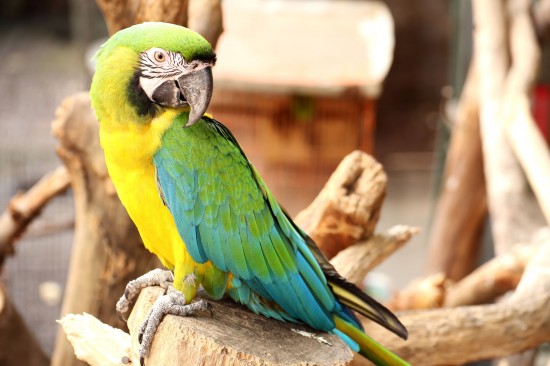
Plants for freshwater aquariums are a wonderful addition to any setup. Not only do they add to the aesthetics of an aquarium, but they also contribute to the overall natural balance of your enclosed ecosystem. Just as plants on land, they contribute to the removal of carbon dioxide and add oxygen. In addition to this, they also help in maintaining the chemical balance of your tank's water by lowering nitrate levels.
Of course, care should always be taken when introducing any new element into an aquarium. With plants for freshwater aquariums special care should be taken in the selection process to make certain that there are no negative effects with regards to the fish, other plants, the filtration system, or the tank substrate as a result of their introduction.
To ensure the best selection process, procure your plants from a trusted vendor, such as a local aquarium shop or online source with whom you have dealt with in the past and that have good reputations. The plants must appear healthy upon visual inspection. Evidence of wilting, dead tissue and excessive browning can be signs of an improperly cared for plant; or even worse, a diseased plant.
Plants for freshwater aquariums can carry unwanted pests. It is best to quarantine the new plants for a few days in a separate water container to monitor for any unusual outgrowths or pests. Common pests carried on such plants are water snails. Although water snails in certain conditions can be a positive addition to an aquarium, if you plan on having live plants and do not have a fish species that eats snail eggs, they can spread fast. Five to seven days in a quarantined tank is enough time to determine if the plant is infected with unwanted bacterial infections or infested with unwanted pests. If the plant is compromised, it is best not to place it in your display tank, and get a healthy replacement.
There are three primary types of plants for freshwater aquariums. These are: ferns, rosettes and stem plants.
Ferns and mosses can exist without the need of a formalized or complex root system. This means that they can attach themselves to such things as rocks, ornaments and nearly any substrate found in your tank. They are non-flowering and provide great cover foliage for fish seeking a hiding space.
Rosette plants are considered wonderful ornamental plants. Species in this category will display wonderful varieties in color. These do require special attention to be taken in how they are anchored into the substrate, as their root system is more developed than those of ferns. With these types of plants it is advisable to have a dual layer of substrate. A two-inch bottom layer should be used specifically to address the nutritional needs of the plant. Laterite is very good in this regard, it allows for good nutrient transmission to the roots. Above the nutritional layer of substrate, a one inch layer of your substrate of choice should be used. Keep in mind, using sand as either the bottom or surface layer should be avoided as it can impede proper root distribution and nutrient absorption.
Stem plants are also a flowering plant, but tend to grow in a more vertical fashion than rosette plants. These are great for creating a "forest" back drop for your aquarium. It is best to place them towards the rear of the tank, so as to provide a background effect and not obscure visibility into the aquarium. The same care should be taken in anchoring these plants to the substrate as with the rosettes.
Whatever the type of plants that you place in your aquarium, it is important to provide adequate lighting for their photosynthesis process. Also, monitor algae outbreaks carefully as algae competes with you plants for nutrients. Make certain that you remove any algae growth from the side surfaces of the tank. If algae are found adhering to the plants themselves, gently rub the affected areas to remove the algae. Lastly, if the plants are outgrowing your tank, do not be afraid to prune them in order to keep them a manageable and presentable size.
Plants for freshwater aquariums need not be the menacing and overwhelming task that many novice aquarium enthusiasts often think them to be. With a little preparation and following the basic care model outlined above, anybody can enjoy the aesthetic beauty and ecological support that only live plants can provide.
 Dalmatian Deafness And Colour Genetics
Dalmatian Deafnes
Dalmatian Deafness And Colour Genetics
Dalmatian Deafnes
 Why You Should Have A Dog Of Cocker Spaniel Breed
Why You Should Have A Dog Of Cocker Spaniel Breed
Why You Should Have A Dog Of Cocker Spaniel Breed
Why You Should Have A Dog Of Cocker Spaniel Breed
 Volunteering at a Local Animal Shelter
Volunteering at a Local Animal Shelter
 Respiratory Infections In Birds
Respiratory Infec
Respiratory Infections In Birds
Respiratory Infec
 Big City, Little Pet - Pet Care In An Urban Environment
Big City, Little
Big City, Little Pet - Pet Care In An Urban Environment
Big City, Little
Copyright © 2005-2016 Pet Information All Rights Reserved
Contact us: www162date@outlook.com